雅思流程图和地图95页PPT
- 格式:ppt
- 大小:9.72 MB
- 文档页数:95

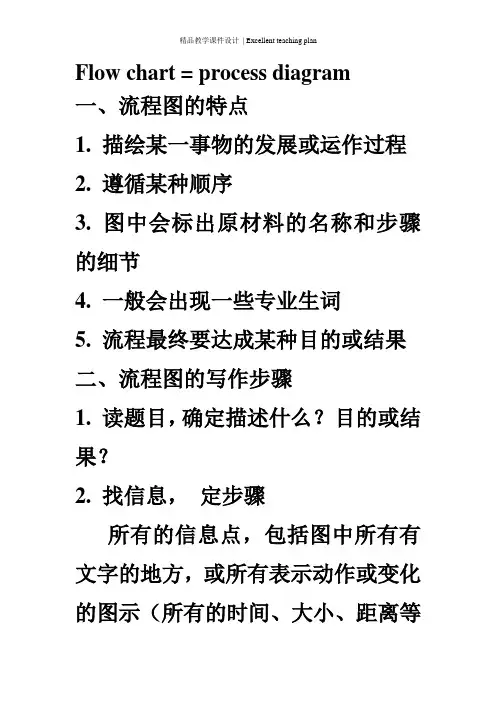
Flow chart = process diagram一、流程图的特点1. 描绘某一事物的发展或运作过程2. 遵循某种顺序3. 图中会标出原材料的名称和步骤的细节4. 一般会出现一些专业生词5. 流程最终要达成某种目的或结果二、流程图的写作步骤1. 读题目,确定描述什么?目的或结果?2. 找信息,定步骤所有的信息点,包括图中所有有文字的地方,或所有表示动作或变化的图示(所有的时间、大小、距离等数字信息)1.定框架,写文章第一段:介绍流程图是做什么的。
第二段:详细介绍原料与准备、每一步的变化、过程及结果。
第三段:简单总结2.读文章,做检查单词拼写、语法、替换重复的词汇等。
三.流程图常用的表达1. The flow chart illustrates the recycling process of _____.2. The process of ____ involves the following steps.3. The whole procedure of ___ can be categorised into ____ stages.4. The row materials for ____ include ___, ___ and ____.5. The first step is to ______.6. ____ with ____ is prepared to _____.7. ____ is used as ____ of ____.8. _____ is mixed with ____ to produce _____.9. _____ can change into ____, when ____.10. The process of ____ is really a simple(complicated) process.The pictures below show the recycling process of wasted glass bottles.As is displayed in the flow chart, the recycling process of glass is really a complex one.The overall process can be categorised=classified=divided into three stages.First, glass products in various forms are gathered=assembled in the Collection point, so that they are easily transported by special trucks or vans to the Cleaning plant, where they get sterilisation byhigh-pressured water. There are three different channels in the Recycling plant, namely Brown, Green and Clear, which represent the colors of glass. After recycled in the furnace, glass products are melted=forged into recycled liquid glass. Mixed with new liquid glass, the compound is finally moulded into solid glass, which, afterwards, will be sent to various customer supermarkets for selling. Thus, the glass will go to the customers for different purposes.Through a brief introduction of the circle of glass recycling, we come to realize that recycling plays a vital role in environmental protection and ecological preservation.The diagram below describes how to recycle organic waste to produce compost(fertilizer).1. The flow chart illustrates the recycling process of organic waste to produce fertilizer.As is clearly shown in the picture, thefirst step is to find a plastic container of two cubic metres and stab several holes on its body so that air could fill in. Secondly, a 15cm thick layer of food is placed at the bottom of the container and grass is put just above the layer for the same height with some news paper covered on the very top. After that, some nitrogen and water are added into the container, and the water should only be hot. Finally, the container is sealed up and the external heat would help the formation of the compost. After six months, when the fertilizer is ready, all we have to do is to pour it into garden soil to nourish plants and flowers.Generally speaking, making garden fertilizer in this way is easy to operate but it costs much time.2. The flow chart shows the wholeprocess of producing fertilizer by recycling organic waste.Firstly, a two cubic metres plastic container is prepared, with some air holes on its body. Secondly, some organic waste is put into the plastic container. The organic waste includes news paper, grass and food. The right order of adding them is putting food in the bottom 15cm of the container and grass in the middle 15cm upon food. News paper is on the very top. Then nitrogen and water are added into the container. What should be noticed is that water can only be hot water. The next step is to seal up and heat the container. After six months, compost is produced. So we can use them to fertilize the garden.As can be seen from the picture, it isusually simple to change organic waste into fertilizer used to water flowers and trees in the garden.3. The information provided in the diagram is about how to use organic waste to produce compost in the following several simple stages.The first stage is to prepare a plastic container, two cubic metres in volume, with some ventilation holes on the side. Then organic waste such as leaves, pieces of paper and residues can be placed into the container so that three layers (each 15 cm) can be formed in the bottom---news paper, grass and food respectively from up to down. The next important step is to add nitrogen into it and then pour hot water only in to mix together. What is remembered to do next is that the container needs to besealed and heated. As a result, the vapor can be emitted through the holes located on its body. After that it takes roughly six months to convert into composts and then they are ready for fertilizing plants and flowers in the garden.。
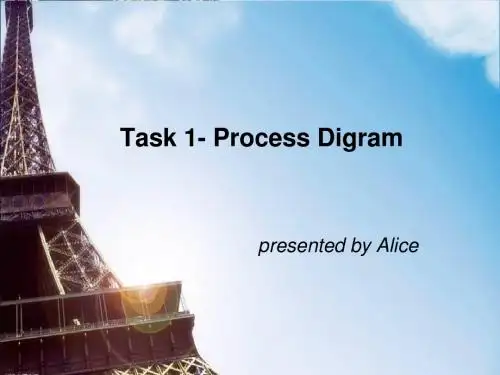
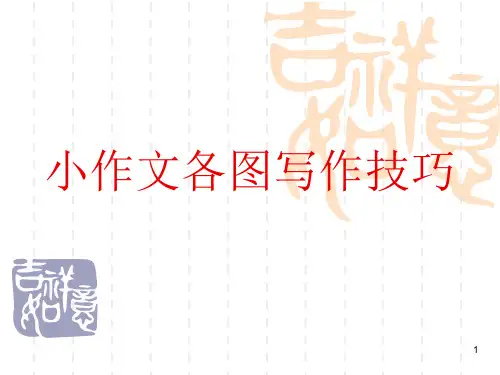
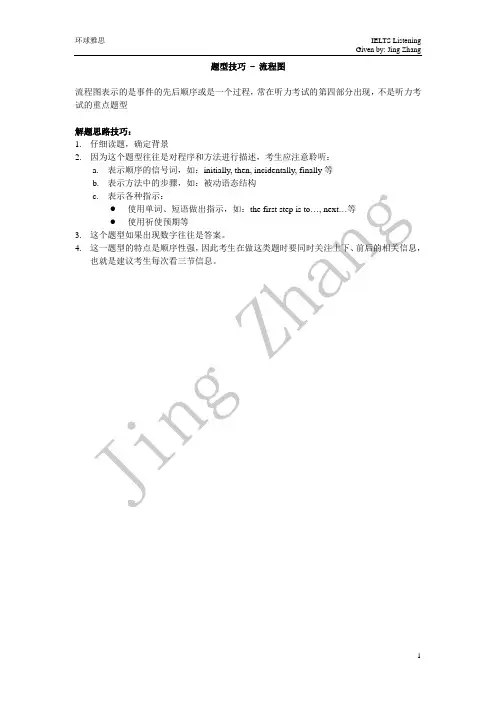
题型技巧–流程图
流程图表示的是事件的先后顺序或是一个过程,常在听力考试的第四部分出现,不是听力考试的重点题型
解题思路技巧:
1.仔细读题,确定背景
2.因为这个题型往往是对程序和方法进行描述,考生应注意聆听:
a.表示顺序的信号词,如:initially, then, incidentally, finally等
b.表示方法中的步骤,如:被动语态结构
c.表示各种指示:
●使用单词、短语做出指示,如:the first step is to…, next…等
●使用祈使预期等
3.这个题型如果出现数字往往是答案。
4.这一题型的特点是顺序性强,因此考生在做这类题时要同时关注上下、前后的相关信息,
也就是建议考生每次看三节信息。
Task 23
Complete the flow chart below. Write NO MORE THAN THREE WORDS for each answer. (SECTION4)
Olive oil production
Olives picked 1______________________
↓
Fruit take to the 2______________________and crushed
↓
Extra virgin oil produced from first pressing
↓
Product bottled and 3______________________
↓
Transported to markets 4____________and _____________。
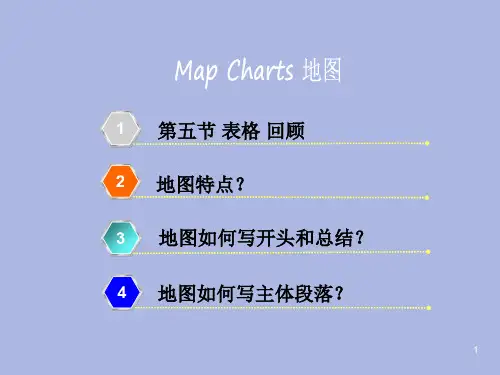
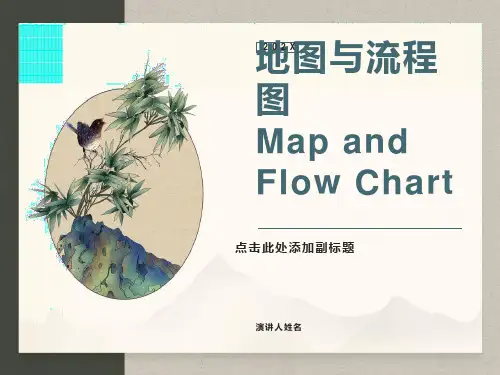

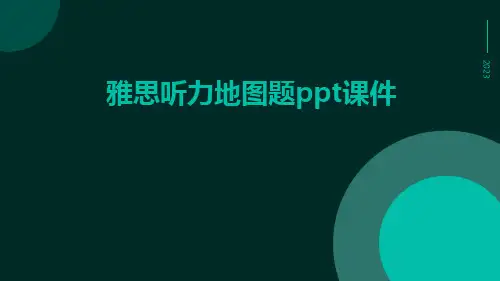
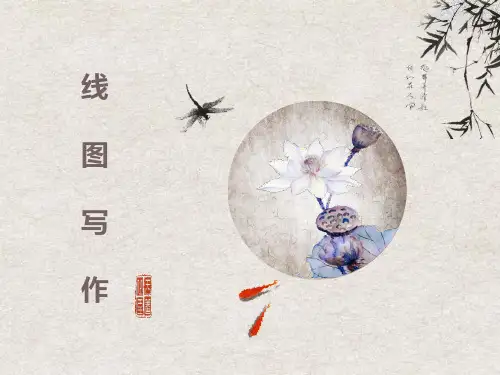
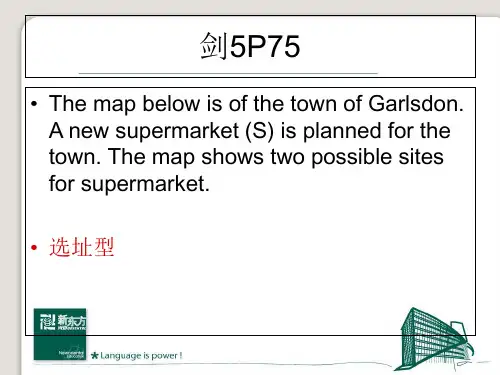
一•The diagrams below show the stages and equipment used in the cement—making process,and how cement is used to produce concrete for building purposes。
•Summarise the information by selecting and reporting the main features, and make comparsons where releant.•The first diagram indicates the stages and equipment in the process of making cement,and the second one illustrates how cement and other materials are mixed to produce concrete for building purposes。
•Cement production involves the following steps. The first step is to put limestone and clay on two different conveyors. Then, these two typesof materials are pressed into the crusher which breaks them into powder. After that, the powder is poured into a mixer, and then mixtures are transmitted into a rotating heater which works with heat.The following step is that a band carrier leads the heated powder to a grinder where the cement comes out。
I E L T S图表作文讲解:地图、流程图学生面授老师时间本次课时IELTS写作第三课时教学思路1. 作文简介、写作技巧2. 实例讲解3. 分析总结4. 课后作业教学目标1. 地图、流程图理论分析分析2. 掌握两类图表作文的基本特征和写作方法3. 学习写作思路讲解重点地图、流程图写作方法范文学习常用句式总结备考资料剑桥基础资料教学详细内容:一、分析雅思图表作文—地图、流程图理论1. 地图题特点➢地图题分两种,一种为地理变迁题,一种为选址题。
地理变迁题描述的是一个地方(多为一个城镇)在一段时间的发展变化。
➢时态:图题反映的是一个地方在过去的一段时间的变化,文章用一般过去时。
如果地图题反映的是一个地方在将来一段时间的变化趋势,文章用一般将来时或表“估计”的词汇。
如果地图题反映的是一个地方从过去到现在的变化,可用现完成时。
➢细节变化:地图每个细节变化都要提到,不要忽视一个细节➢语态:地图题用被动语态2.流程图(flow chart)特点其一,流程图的题目基本不会重复,因此复习已经考过的题目不会太大效果,第二,流程图的词汇随着图表的对象而变化,很少出现重复的词汇。
流程图考察的次数不多,每年大概3-5次,集中出现在年初和年末的三个月。
一般来说,流程图和普通图表的区别主要在于:➢流程图基本上不会出现数据,文字信息占主要地位➢流程图以描述为主,比较的机会比图表题少➢流程图中出现的信息都需要描述,而普通图表则不需要描述每一个数据➢流程图的时态比较单一,主要是用一般现在时➢流程图的分段比较灵活,只要不同阶段之间的差距很明显,就可以另起一段3. 流程图备考注意事项:1)注意掌握段落连接或者不同阶段之间的说法(sequence expression)➢表示首阶段的一些说法a)The process starts fromb)At the first/initial stage,c)At the beginning of the cycle,d)During the initial phase,e)The beginning of the whole cycle is marked byf)(名词 or 动名词)is the first step in (+ 名词 or 动名词)➢表示次段的一些说法:a)The second stage isb)The next step in the process is➢表示最后阶段的一些说法a)(名词 or 动名词) is the last step in the procedure.b)The final phase of the procedure is aboutc)In the final phase,d)Entering the final phase,e)(名词 or 动名词) is the final stage.2)要注意各个阶段的比较,充实文章内容,避免平铺直叙3)注意流程图的读图顺序:找出流程图的始末点,并划分中间的步骤或阶段;掌握表示“顺序”的连接词(Sequencing Words),用来说明过程的各个步骤和先后顺序。